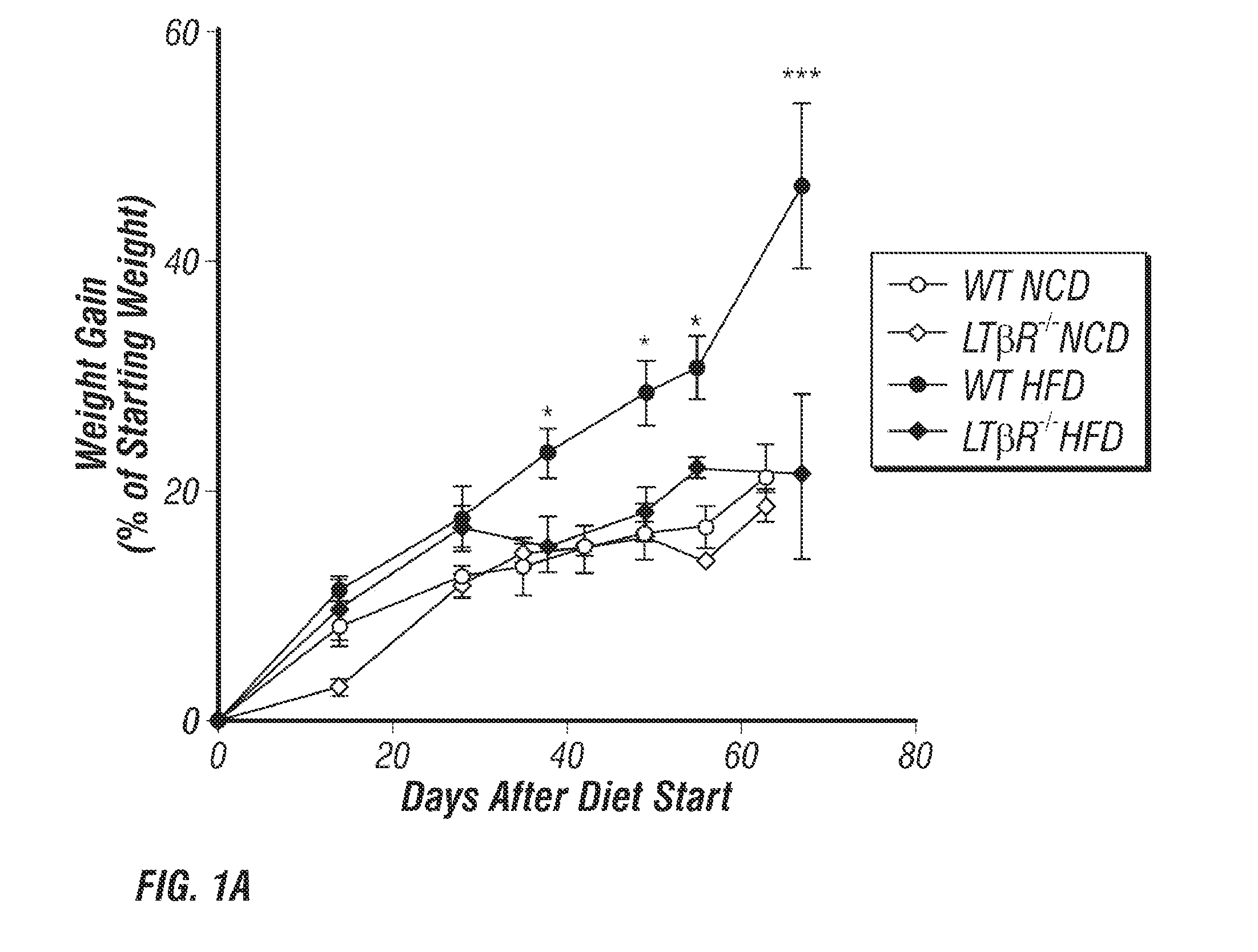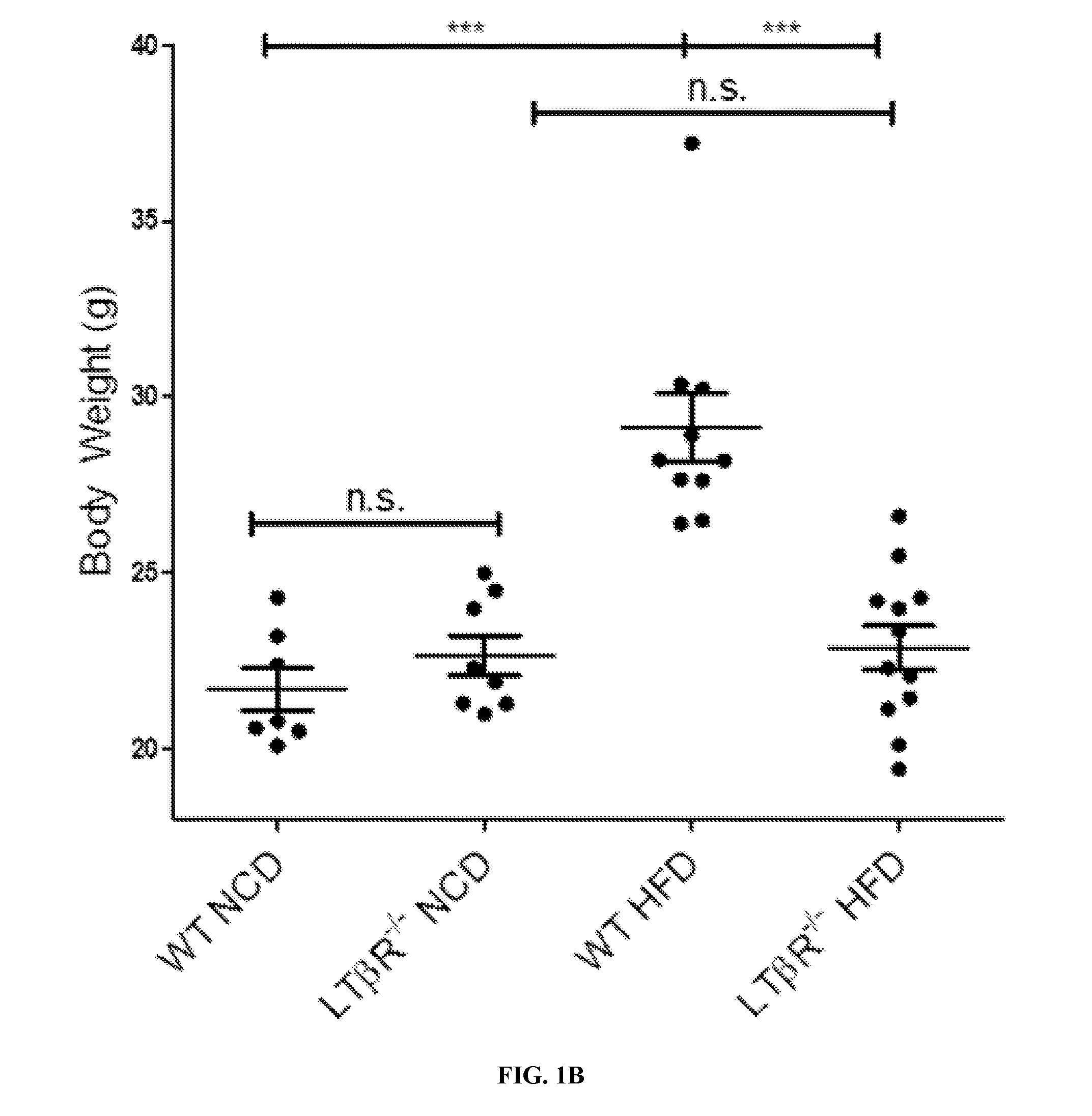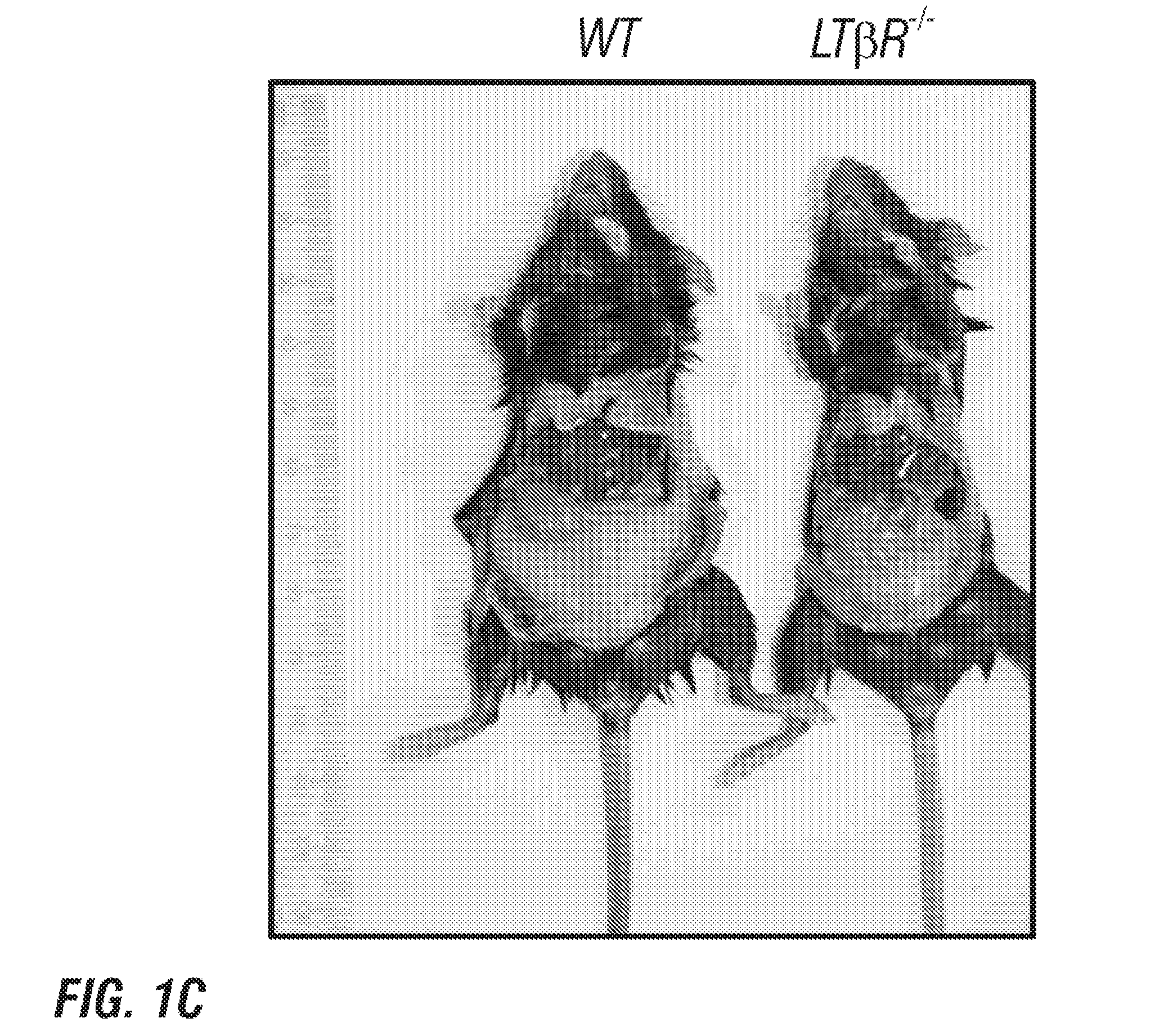Methods of treating obesity
a technology of obesity and treatment methods, applied in the field of biological and medical science, can solve the problems of excess body fat and/or obesity, and achieve the effect of reducing weight, and stabilizing or reducing weigh
- Summary
- Abstract
- Description
- Claims
- Application Information
AI Technical Summary
Benefits of technology
Problems solved by technology
Method used
Image
Examples
example 1
Methods
[0129]Mice.
[0130]WT C5713116 mice were obtained from Jackson Laboratories, Harlan Laboratories, or the National Cancer Institute (NCI). LTα− / −, LTβR− / − and RORγt− / − mice were bred at the University of Chicago. In cases of all heterozygous animals, breedings were set up where one parent was a knock-out and the other was a heterozygous animal. Mice were genotyped by PCR and weaned as early as 21 days and as late as 28 days after birth. Germ Free C57BL / 6 mice were maintained in the Gnotobiotic facility at the University of Chicago. Mice were maintained according to the standards set by the University of Chicago's IACUC (Protocol #71866 and #58771).
[0131]IUD and NCD Challenge Experiments.
[0132]All SPF mice were maintained on Harlan Teklad 2918 until the start of diet where they were either switched onto 88137 or maintained on 2918 for the duration of the experiment. Mice were weighed every 7-10 days after the start of diet. At the end of diet (63-70 days after the start of diet),...
example 2
Results
[0151]LTβR and LTα are Essential for Weight Gain in DIO.
[0152]In order to address the role of the LT pathway in DIO, the inventor challenged WT and LTβR− / − adult animals with HFD. Animals were kept on normal chow diet (NCD) until 9 weeks of age where they were either switched onto HFD or maintained on NCD (for composition of all diets see Table 1). While there was no difference in growth between WT and LTβR− / − mice on NCD, WT mice on HFD gained significantly more weight than LTβR− / − animals, which were resistant to DIO (FIG. 1A). There was no difference in weight after 9 weeks of dietary challenge between WT and LTβR− / − animals maintained on NCD; WT and LTβR− / − animals weighed 21.70±0.60 g and 22.66±0.56 g at the end of NCI) respectively (FIG. 1B). However, at the end of HFD, WT and LTβR− / − groups were significantly different, weighing 29.13±0.99 g and 22.87±0.62 g respectively (FIG. 1B). In contrast to WT mice, LTβR− / − animals do not gain additional weight after prolonged HF...
example 3
Discussion
[0169]While diet appears to influence the microbiota independently of host genotype (Muegge, 2011), the possibility that innate immune responses serve as a critical pivot for species specific responses to HFD provides a potential link between host responses to diet, the intestinal microbiota, and obesity. This study demonstrates that the LT / IL23 / IL-22 pathway, essential for innate immune defense against gut pathogens, is also essential for regulation of specific commensal responses to HFD. Inflammation induced by HFD is not restricted solely to adipose tissue. This was initially hinted by the observation that HFD can induce NF-κB expression in the colon early after the start of HFD (Ding, 2010). Given the important symbiosis shared between the intestinal microbiota and mucosal inflammatory responses, it is logical and important to consider how changes in immunity influence the microbiota and in turn, how those changes to the microbiota feedback to influence not only local ...
PUM
| Property | Measurement | Unit |
|---|---|---|
| weight | aaaaa | aaaaa |
| weight | aaaaa | aaaaa |
| weight | aaaaa | aaaaa |
Abstract
Description
Claims
Application Information
 Login to View More
Login to View More - R&D
- Intellectual Property
- Life Sciences
- Materials
- Tech Scout
- Unparalleled Data Quality
- Higher Quality Content
- 60% Fewer Hallucinations
Browse by: Latest US Patents, China's latest patents, Technical Efficacy Thesaurus, Application Domain, Technology Topic, Popular Technical Reports.
© 2025 PatSnap. All rights reserved.Legal|Privacy policy|Modern Slavery Act Transparency Statement|Sitemap|About US| Contact US: help@patsnap.com



